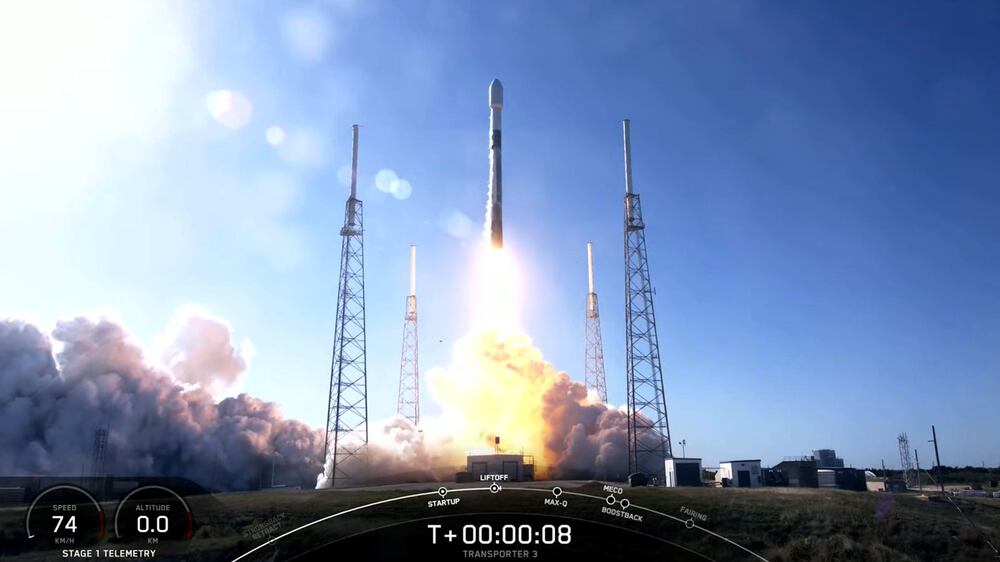A Dubai nanosatellite on a mission to improve the emirate's utility network blasted off into orbit on Thursday evening.
The Dewasat-1 cubesat successfully launched on board a SpaceX rocket at about 7.30pm UAE time from Florida’s Kennedy Space Centre.
Its spectacular departure from Earth was streamed live on YouTube.
The UAE satellite was one of more than 100 on board the SpaceX Falcon 9.
It successfully separated from the rocket about an hour after lift-off.
The Dubai Water and Electricity Authority announced its Space-D programme last year. It is an effort to improve operations, maintenance and the planning of its networks by using nanosatellite technology.
This involves launching a nanosat constellation that will support Dewa’s primary satellite.
Utility companies can benefit from satellite technology, which allows them to monitor and map their infrastructure as well as track the environmental impact their operations have. The data can also help these companies improve their services.
Dewasat-1, an imaging satellite, will be able to better monitor high-voltage transmission lines, substations, buildings and solar power stations.
Dewa also expects the satellite to enhance the performance and efficiency of the photovoltaic solar panels at the Mohammed bin Rashid Al Maktoum Solar Park, the world’s largest single-site solar park.
Dewasat-1 is the first of many other satellites Dewa plans to launch.
Saeed Al Tayer, chief executive of Dewa, said the programme would strengthen Dubai's electricity and water networks.
“The programme aims to build Dewa’s capabilities and train Emirati professionals to use space technologies to enhance its electricity and water networks,” he said, when the programme was first announced.
“The programme will take advantage of Fourth Industrial Revolution technologies such as the Internet of Things, artificial intelligence and blockchain to exchange information with the help of satellite communications and Earth observation technologies.”
The utility authority has teamed up with US-based NanoAvionics, a small satellite manufacturer, to build Dewasat-1, a three-unit cubesat, and a six-unit cubesat.
Cubesats are miniature satellites that offer easier and cheaper access to space. Some schools have programmes where pupils build 1-unit cubesats, but space companies build more complex ones that are up to three units.
They can be used for a range of applications, including taking images of Earth, monitoring climate change and producing other data.







